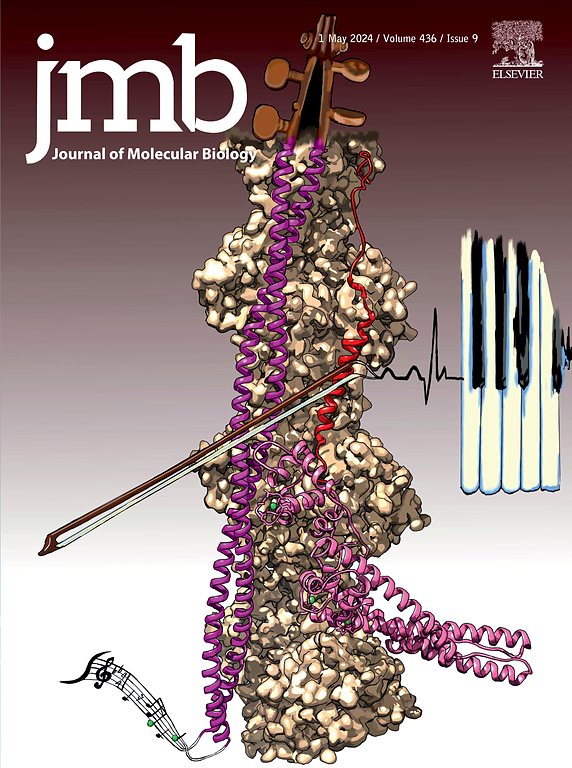A BiP-centric View of Endoplasmic Reticulum Functions and of My Career
IF 4.7
2区 生物学
Q1 BIOCHEMISTRY & MOLECULAR BIOLOGY
引用次数: 0
Abstract
After completing my post-doctoral training at the University of Alabama, Birmingham and a brief period on the faculty there, I joined the Department of Tumor Cell Biology at St. Jude Children’s Research Hospital in 1987 as an Assistant Member and started my independent research program. For the following 37 years, I led a relatively small basic research group comprised at various times of post-doctoral fellows, graduate students, undergraduate students, and research technicians; many of whom I am still in contact. Last year I closed the lab and transitioned to an emeritus position at St. Jude. I continue to maintain several research collaborations covering areas of research that have long been dear to my heart.
My post-doctoral studies on BiP revealed that it controlled immunoglobulin assembly and transport, and as such, played a critical role in the fidelity of the immune response. My lab continued to define BiP’s functions in protein folding and subunit assembly, as well as, in degradation of proteins that failed to mature properly using biochemical, cell-based, and biophysical analyses. Several ER localized co-factors that regulate the activity of BiP and allow it to contribute to its multiple ER functions were identified by our group. These include DnaJ family members and nucleotide change factors. Through a variety of collaborative studies, we pursued BiP’s functions in maintaining the permeability barrier of the translocon, contributing to ER calcium stores, and regulating the up-stream transducers of the UPR, a stress response that is activated by the accumulation of unfolded proteins in the ER.

从内质网功能和我的职业生涯的角度来看,这是一个以bp为中心的观点。
在伯明翰阿拉巴马大学完成博士后培训并短暂任教后,我于 1987 年加入圣裘德儿童研究医院肿瘤细胞生物学部门,担任助理成员,并开始了我的独立研究计划。在随后的 37 年里,我领导着一个规模相对较小的基础研究小组,成员包括博士后、研究生、本科生和研究技术人员,其中许多人至今仍与我保持联系。去年,我关闭了实验室,转而在圣裘德担任名誉职位。我继续保持着几项研究合作,涉及的研究领域都是我心仪已久的。我对 BiP 的博士后研究表明,它控制着免疫球蛋白的组装和运输,因此在免疫反应的保真度方面起着至关重要的作用。我的实验室继续通过生化、细胞和生物物理分析,确定 BiP 在蛋白质折叠和亚基组装以及降解中的功能。我们的研究小组发现了几种调节 BiP 活性并使其发挥多种 ER 功能的 ER 定位辅助因子。其中包括 DnaJ 家族成员和核苷酸变化因子。通过各种合作研究,我们探究了 BiP 在维持转译接头的通透性屏障、促进 ER 钙储存以及调节 UPR(一种由 ER 中未折叠蛋白的积累而激活的应激反应)上游转导因子方面的功能。
本文章由计算机程序翻译,如有差异,请以英文原文为准。
求助全文
约1分钟内获得全文
求助全文
来源期刊

Journal of Molecular Biology
生物-生化与分子生物学
CiteScore
11.30
自引率
1.80%
发文量
412
审稿时长
28 days
期刊介绍:
Journal of Molecular Biology (JMB) provides high quality, comprehensive and broad coverage in all areas of molecular biology. The journal publishes original scientific research papers that provide mechanistic and functional insights and report a significant advance to the field. The journal encourages the submission of multidisciplinary studies that use complementary experimental and computational approaches to address challenging biological questions.
Research areas include but are not limited to: Biomolecular interactions, signaling networks, systems biology; Cell cycle, cell growth, cell differentiation; Cell death, autophagy; Cell signaling and regulation; Chemical biology; Computational biology, in combination with experimental studies; DNA replication, repair, and recombination; Development, regenerative biology, mechanistic and functional studies of stem cells; Epigenetics, chromatin structure and function; Gene expression; Membrane processes, cell surface proteins and cell-cell interactions; Methodological advances, both experimental and theoretical, including databases; Microbiology, virology, and interactions with the host or environment; Microbiota mechanistic and functional studies; Nuclear organization; Post-translational modifications, proteomics; Processing and function of biologically important macromolecules and complexes; Molecular basis of disease; RNA processing, structure and functions of non-coding RNAs, transcription; Sorting, spatiotemporal organization, trafficking; Structural biology; Synthetic biology; Translation, protein folding, chaperones, protein degradation and quality control.
 求助内容:
求助内容: 应助结果提醒方式:
应助结果提醒方式:


